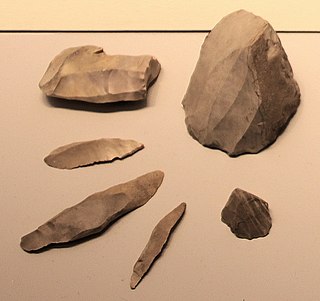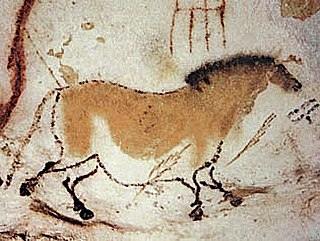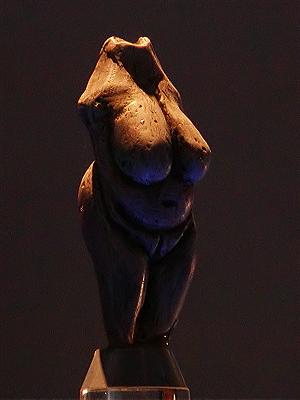
The Epipalaeolithic Near East designates the Epipalaeolithic in the prehistory of the Near East. It is the period after the Upper Palaeolithic and before the Neolithic, between approximately 20,000 and 10,000 years Before Present (BP). The people of the Epipalaeolithic were nomadic hunter-gatherers who generally lived in small, seasonal camps rather than permanent villages. They made sophisticated stone tools using microliths—small, finely-produced blades that were hafted in wooden implements. These are the primary artifacts by which archaeologists recognise and classify Epipalaeolithic sites.

The Mesolithic or Middle Stone Age is the Old World archaeological period between the Upper Paleolithic and the Neolithic. The term Epipaleolithic is often used synonymously, especially for outside northern Europe, and for the corresponding period in the Levant and Caucasus. The Mesolithic has different time spans in different parts of Eurasia. It refers to the final period of hunter-gatherer cultures in Europe and Middle East, between the end of the Last Glacial Maximum and the Neolithic Revolution. In Europe it spans roughly 15,000 to 5,000 BP; in the Middle East roughly 20,000 to 10,000 BP. The term is less used of areas farther east, and not at all beyond Eurasia and North Africa.

A microlith is a small stone tool usually made of flint or chert and typically a centimetre or so in length and half a centimetre wide. They were made by humans from around 35,000 to 3,000 years ago, across Europe, Africa, Asia and Australia. The microliths were used in spear points and arrowheads.

In archaeology, the Epipalaeolithic or Epipaleolithic is a period occurring between the Upper Paleolithic and Neolithic during the Stone Age. Mesolithic also falls between these two periods, and the two are sometimes confused or used as synonyms. More often, they are distinct, referring to approximately the same period of time in different geographic areas. Epipaleolithic always includes this period in the Levant and, often, the rest of the Near East. It sometimes includes parts of Southeast Europe, where Mesolithic is much more commonly used. Mesolithic very rarely includes the Levant or the Near East; in Europe, Epipalaeolithic is used, though not very often, to refer to the early Mesolithic.

Creswell Crags is an enclosed limestone gorge on the border between Derbyshire and Nottinghamshire, England, near the villages of Creswell and Whitwell. The cliffs in the ravine contain several caves that were occupied during the last ice age, between around 43,000 and 10,000 years ago. Its caves contain the northernmost cave art in Europe. The evidence of occupation found in the rich series of sediments that accumulated over many thousands of years is regarded as internationally unique in demonstrating how prehistoric people managed to live at the extreme northernmost limits of their territory during the Late Pleistocene period.

The Creswellian is a British Upper Palaeolithic culture named after the type site of Creswell Crags in Derbyshire by Dorothy Garrod in 1926. It is also known as the British Late Magdalenian. According to Andreas Maier: "In current research, the Creswellian and Hamburgian are considered to be independent but closely related entities which are rooted in the Magdalenian." The Creswellian is dated between 13,000 and 11,800 BP and was followed by the most recent ice age, the Younger Dryas, when Britain was at times unoccupied by humans.

The Magdalenian cultures are later cultures of the Upper Paleolithic and Mesolithic in western Europe. They date from around 17,000 to 12,000 years ago. It is named after the type site of La Madeleine, a rock shelter located in the Vézère valley, commune of Tursac, in France's Dordogne department.

The Azilian is a Mesolithic industry of the Franco-Cantabrian region of northern Spain and Southern France. It dates approximately 10,000–12,500 years ago. Diagnostic artifacts from the culture include projectile points, crude flat bone harpoons and pebbles with abstract decoration. The latter were first found in the River Arize at the type-site for the culture, the Grotte du Mas d'Azil at Le Mas-d'Azil in the French Pyrenees. These are the main type of Azilian art, showing a great reduction in scale and complexity from the Magdalenian Art of the Upper Palaeolithic.

The Upper Paleolithic is the third and last subdivision of the Paleolithic or Old Stone Age. Very broadly, it dates to between 50,000 and 12,000 years ago, according to some theories coinciding with the appearance of behavioral modernity in early modern humans, until the advent of the Neolithic Revolution and agriculture.

The Ahrensburg culture or Ahrensburgian was a late Upper Paleolithic nomadic hunter culture in north-central Europe during the Younger Dryas, the last spell of cold at the end of the Weichsel glaciation resulting in deforestation and the formation of a tundra with bushy arctic white birch and rowan. The most important prey was the wild reindeer. The earliest definite finds of arrow and bow date to this culture, though these weapons might have been invented earlier. The Ahrensburgian was preceded by the Hamburg and Federmesser cultures and superseded by the Maglemosian and Swiderian cultures. Ahrensburgian finds were made in southern and western Scandinavia, the North German plain and western Poland. The Ahrensburgian area also included vast stretches of land now at the bottom of the North and Baltic Sea, since during the Younger Dryas the coastline took a much more northern course than today.

The Hamburg culture or Hamburgian was a Late Upper Paleolithic culture of reindeer hunters in northwestern Europe during the last part of the Weichsel Glaciation beginning during the Bölling interstadial. Sites are found close to the ice caps of the time. They extend as far north as the Pomeranian ice margin.

The Franco-Cantabrian region is a term applied in archaeology and history to refer to an area that stretches from Asturias, in northern Spain, to Aquitaine and Provence in Southern France. It includes the southern half of France and the northern strip of Spain looking at the Bay of Biscay.

Prehistoric France is the period in the human occupation of the geographical area covered by present-day France which extended through prehistory and ended in the Iron Age with the Roman conquest, when the territory enters the domain of written history.
The Late Glacial Interstadial (LGI) c. 14,670 to c. 12,890 BP, also called the Bølling–Allerød interstadial, represents the first pronounced warming since the end of the Last Glacial Maximum (LGM). Human populations, which had previously been forced into refuge areas, gradually begin to repopulate the Northern Hemisphere's Eurasian landmass.

The Swiderian culture is an Upper Palaeolithic/Mesolithic cultural complex, centred on the area of modern Poland. The type-site is Świdry Wielkie, in Otwock near the Swider River, a tributary to the Vistula River, in Masovia. The Swiderian is recognized as a distinctive culture that developed on the sand dunes left behind by the retreating glaciers. Rimantienė (1996) considered the relationship between Swiderian and Solutrean "outstanding, though also indirect", in contrast with the Bromme-Ahrensburg complex, for which she introduced the term "Baltic Magdalenian" for generalizing all other North European Late Paleolithic culture groups that have a common origin in Aurignacian.

Paleolithic Europe, or Old Stone Age Europe, encompasses the Paleolithic or Old Stone Age in Europe from the arrival of the first archaic humans, about 1.4 million years ago until the beginning of the Mesolithic around 10,000 years ago. This period thus covers over 99% of the total human presence on the European continent. The early arrival and disappearance of Homo erectus and Homo heidelbergensis, the appearance, complete evolution and eventual demise of Homo neanderthalensis and the immigration and successful settlement of Homo sapiens all have taken place during the European Paleolithic.

The prehistory of Southeastern Europe, defined roughly as the territory of the wider Southeast Europe covers the period from the Upper Paleolithic, beginning with the presence of Homo sapiens in the area some 44,000 years ago, until the appearance of the first written records in Classical Antiquity, in Greece. First Greek language is Linear A and follows Linear B, which is a syllabic script that was used for writing in Mycenaean Greek, the earliest attested form of the Greek language. The script predates the Greek alphabet by several centuries. The oldest Mycenaean writing dates to about 1400 BC. It is descended from the older Linear A, an undeciphered earlier script used for writing the Minoan language, as is the later Cypriot syllabary, which also recorded Greek. Linear B, found mainly in the palace archives at Knossos, Kydonia, Pylos, Thebes and Mycenae, disappeared with the fall of Mycenaean civilization during the Late Bronze Age collapse.
The archaeological site Niederbieber is an important representative of the Federmesser culture. Dating to the end of the Pleistocene, the site is one of the most extensively excavated archaeological sites dating to the late Upper Palaeolithic. Finds and features are extraordinarily well preserved as the site was protected by fallout from the Laacher See volcanic eruption approximately 12,900 years ago. Comprehensive archaeological studies have provided a detailed view of activities and settlement dynamics of hunter-gatherer groups at the end of the ice age.

The Epigravettian was one of the last archaeological industries and cultures of the European Upper Paleolithic. It emerged after the Last Glacial Maximum around ~21,000 cal. BP or 19,050 BC, and is considered to be a cultural derivative of the Gravettian culture. Initially named Tardigravettian in 1964 by Georges Laplace in reference to several lithic industries found in Italy, it was later renamed in order to better emphasize its independent character.

Vasco-Cantabria, in archaeology and the environmental sciences, is an area on the northern coast of Spain. It covers similar areas to the northern parts of the adjacent modern regions of the Basque country and Cantabria. In geology the "Vasco-Cantabrian Basin" or "Basque-Cantabrian Basin" covers the area and the seas off the coast in the Bay of Biscay, an area between the Iberian and European tectonic plates.


















